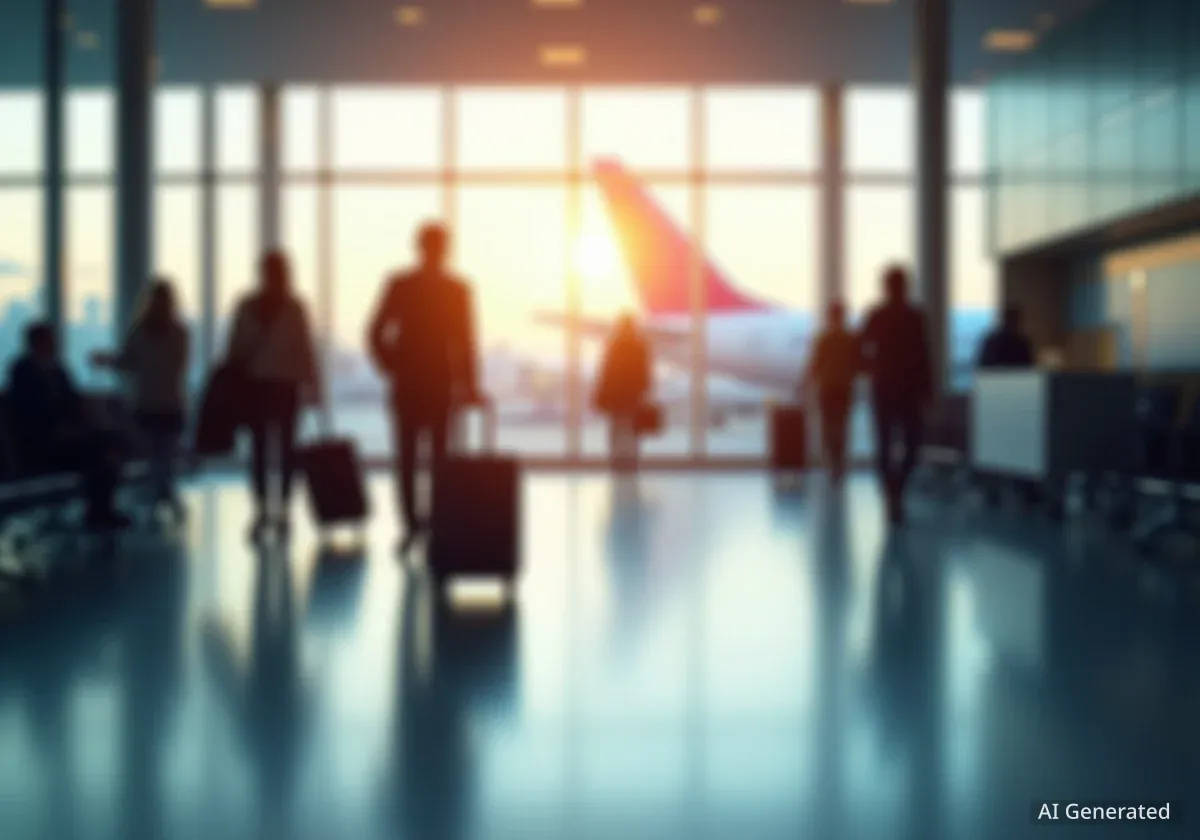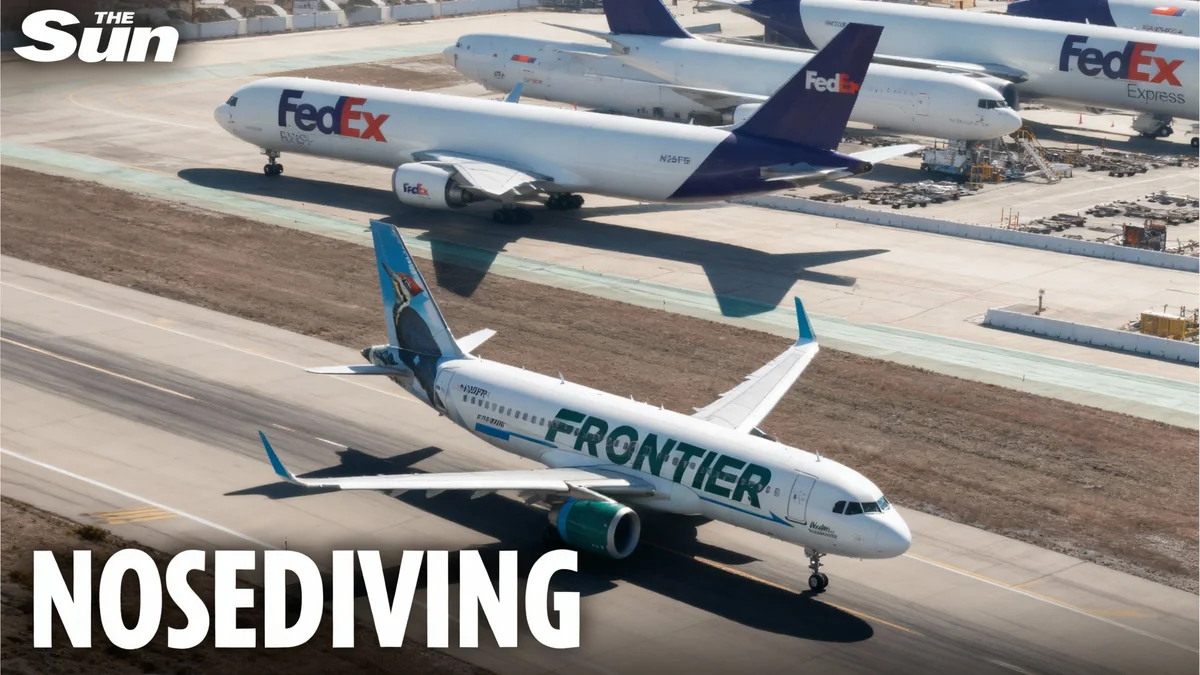Two United Airlines aircraft made contact on the ground at New York's LaGuardia Airport on Friday evening, adding to a day of significant travel disruptions across the region. The incident involved an arriving flight from Chicago and a stationary plane preparing for departure to Houston.
The collision occurred as the inbound aircraft was taxiing to its gate. United Airlines confirmed that no injuries were reported among passengers or crew on either plane. Both aircraft were returned to the gate, where passengers deplaned normally while the airline worked to arrange alternative travel plans.
Key Takeaways
- Two United Airlines planes were involved in a ground collision at LaGuardia Airport.
- The incident occurred when a plane arriving from Chicago made contact with a stationary aircraft bound for Houston.
- No injuries were reported, and all passengers deplaned safely at the gate.
- The collision happened during a day of widespread delays and cancellations at New York-area airports due to staffing and weather issues.
Details of the Ground Incident
The event took place on Friday evening during ground operations. According to a statement from United Airlines, the wing of the arriving Boeing 737, which was coming from Chicago O'Hare International Airport, clipped the tail of the other aircraft.
The second plane, also a United Airlines flight, was stationary at the time and was being prepared for a scheduled departure to Houston's George Bush Intercontinental Airport. Following the contact, both flights were taken out of service for inspection.
A passenger on one of the flights described the moment of impact. "We all felt a bump during taxi to the runway but didn’t know it was another plane until the captain said it was," the passenger reported. The captain promptly informed those on board about the situation and the need to return to the gate.
"A plane arriving from Chicago was pulling into its gate when it made contact with the tail of a stationary plane, which was preparing to depart for Houston," a United Airlines spokesperson confirmed.
Both sets of passengers were accommodated by the airline, which immediately began rebooking them on other flights to their final destinations. The Port Authority of New York and New Jersey, which operates LaGuardia Airport, deferred all comments on the specifics of the incident to the airline.
A Challenging Day for New York Aviation
The collision occurred against a backdrop of severe operational challenges for New York City's major airports. Throughout Friday, LaGuardia (LGA), John F. Kennedy International Airport (JFK), and Newark Liberty International Airport (EWR) experienced significant disruptions.
Friday's Flight Disruptions
- LaGuardia (LGA): Over 570 delays and more than 130 cancellations.
- Nationwide: More than 5,700 delays and nearly 500 cancellations.
These issues were attributed to a combination of factors. New York City Emergency Management issued alerts for ground delays at all three airports, citing both high winds in the area and air traffic control staffing shortages. At one point during the afternoon, JFK was under a complete ground stop, halting all traffic for several hours.
The Impact of Staffing Shortages
The Federal Aviation Administration (FAA) released a statement addressing the widespread problems, highlighting the strain on air traffic controllers. The agency noted that many of its facilities were understaffed, with New York-area facilities being particularly affected.
FAA Statement on Air Traffic Control
The FAA explained the severe pressure on its workforce, stating, "Currently, half of our Core 30 facilities are experiencing staffing shortages, and nearly 80 percent of air traffic controllers are absent at New York–area facilities." The statement also referenced the immense stress and fatigue faced by controllers, linking it directly to the ongoing government shutdown that left many federal employees unpaid for over a month.
The statement underscored the critical role of air traffic controllers in maintaining the safety and efficiency of the national airspace. "The shutdown must end so that these controllers receive the pay they’ve earned and travelers can avoid further disruptions and delays," the FAA urged.
Airport Operations and Safety Protocols
Ground incidents, while less common than in-air events, are taken very seriously by airlines and airport authorities. When two aircraft make contact on the tarmac, a standard set of procedures is immediately initiated.
- Immediate Halt: Both flight crews stop their aircraft and communicate with ground control.
- Return to Gate: The aircraft are carefully taxied back to a gate or a remote parking stand.
- Passenger Deplaning: Passengers are deplaned safely and returned to the terminal.
- Aircraft Inspection: Both planes are grounded and undergo a thorough structural inspection by maintenance engineers to assess any damage.
- Investigation: The airline and relevant authorities, sometimes including the FAA or NTSB depending on the severity, launch an investigation to determine the cause of the incident.
In this case, United Airlines is leading the internal review to understand the circumstances that led to the collision. Such reviews typically examine communication logs between the flight crew and ground control, airport surface movement data, and crew statements to prevent future occurrences. The safety of passengers and crew remains the primary focus throughout the process.





